Lord Nelson was in Japan a few months ago, and took the chance to visit Mikasa. She came back with a plethora of photos, and we decided to collaborate in publishing them. Her comments will be in italics, while mine will be in regular text.
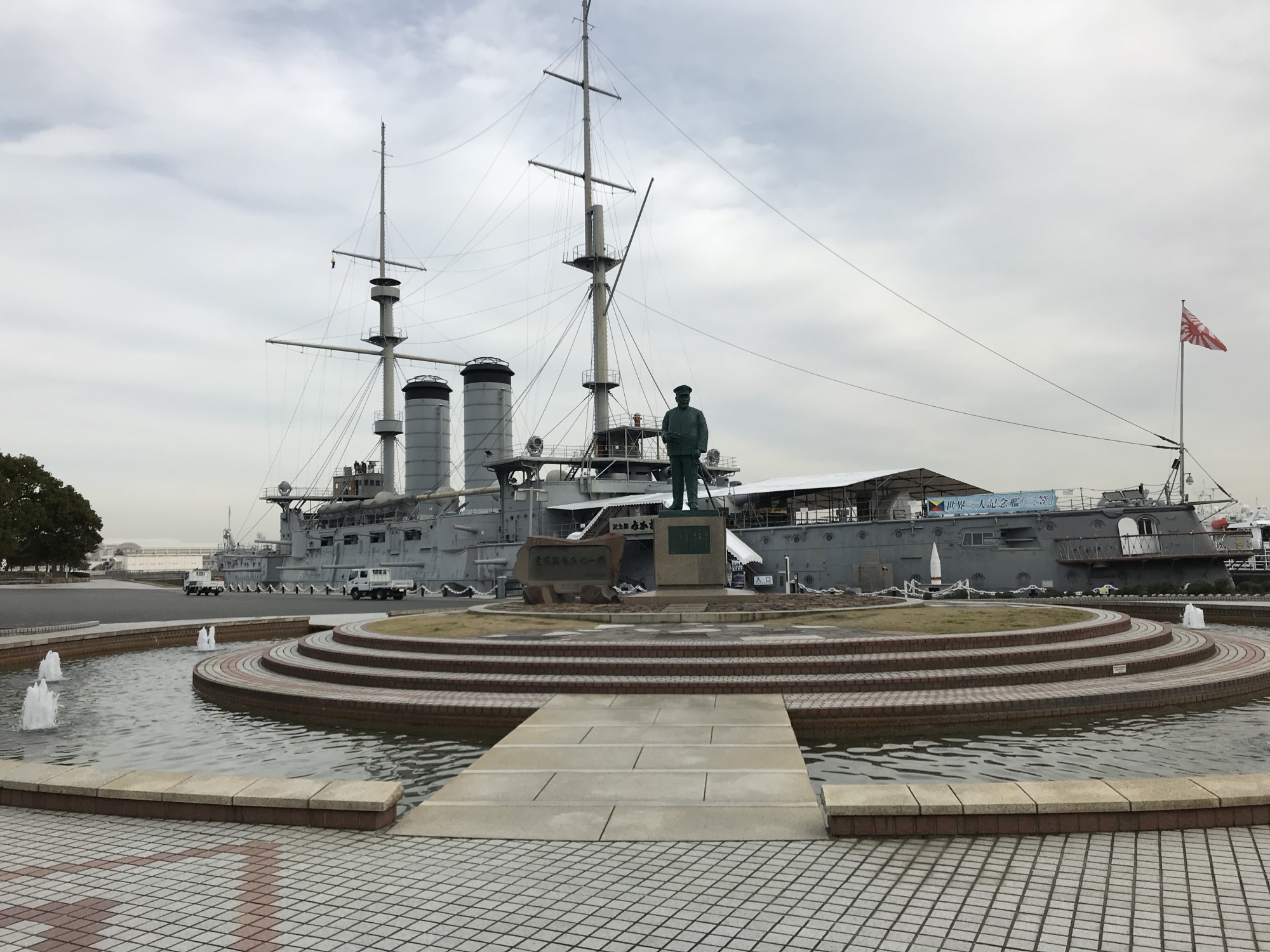
Mikasa in December 20181
I agree with DismalPseudoscience's review, with an additional comment that Mikasa is very accessible to English-speaking foreigners, especially when compared to other Japanese museums. After spending 1.5 weeks visiting various Japanese museums (most of them with only Japanese text on the signs) I was surprised by how much of Mikasa's signage was in English. Most signs included a full translation of the text, not just of the title.
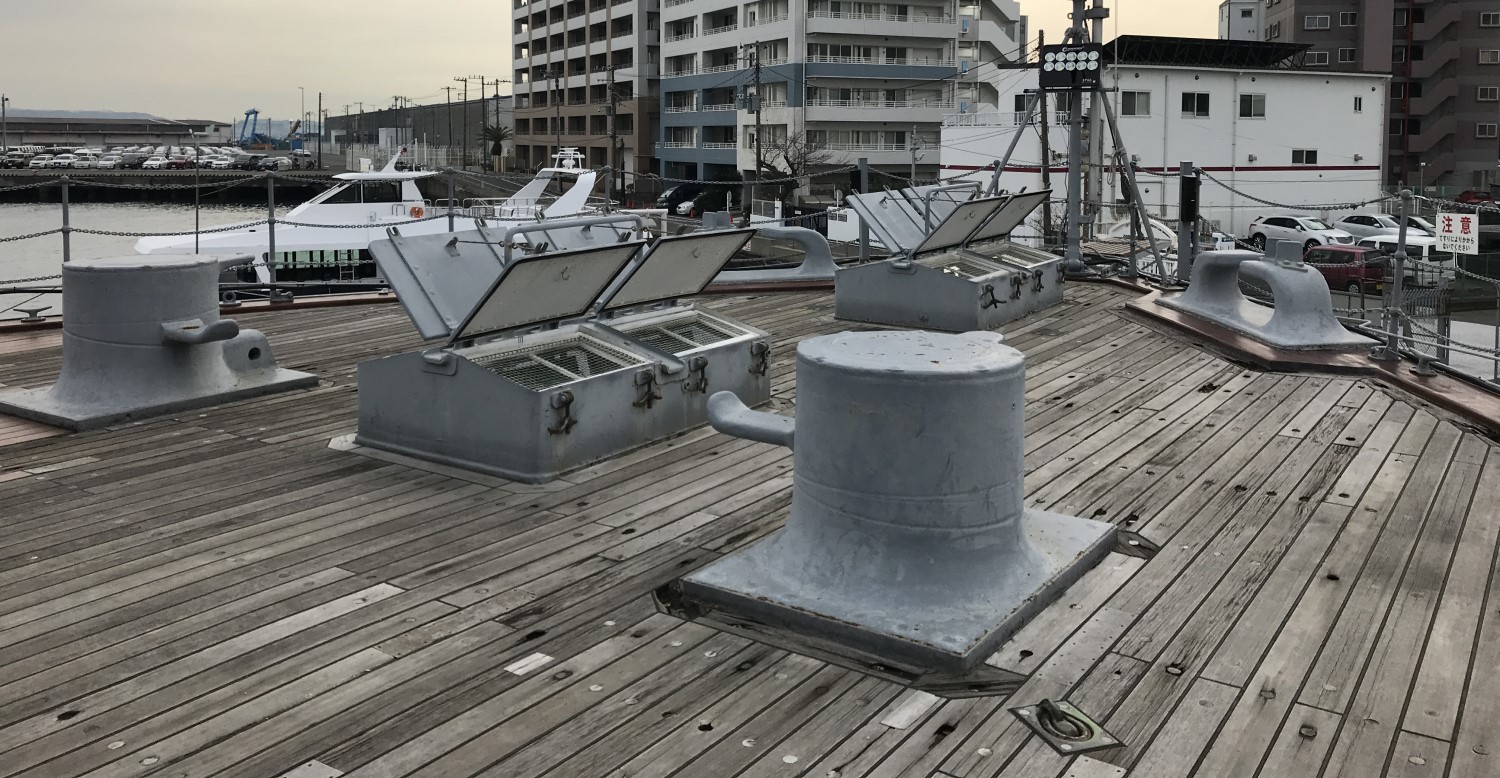
One notable feature is these vents into the officer's quarters. Mikasa was built before modern ventilation systems, and these were used to provide fresh air in good weather, but could be locked down if conditions worsened.
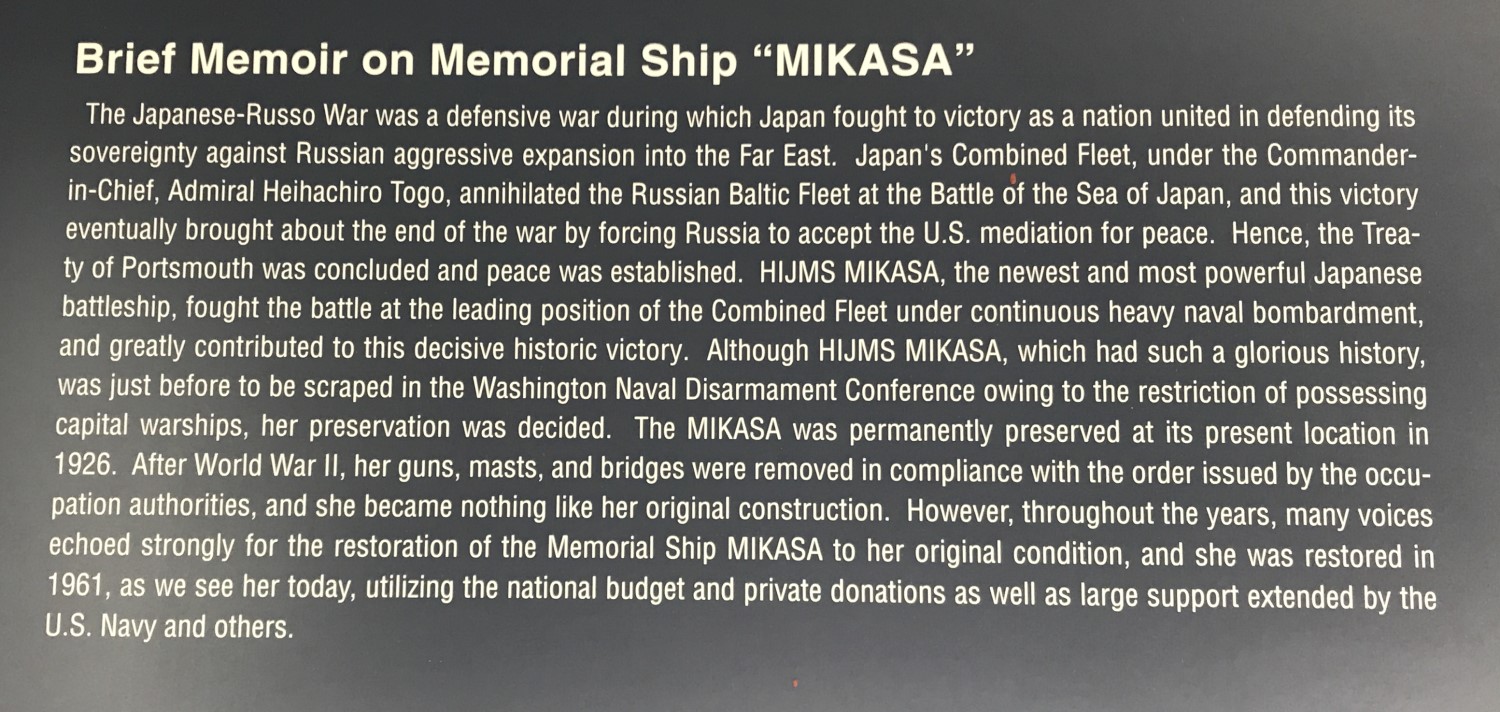
The phrasing on the signage was interesting, but a bit surreal to me, with its emphasis on Japan defending her borders. I spoke with the tour guide who had translated most of the signage into English. He was thrilled to have a visitor from another country, and wanted to impress upon me the might of the Japanese navy. He was very enthusiastic and also very nationalistic. The weirdest part of the conversation was when he brought up Pearl Harbor, with no prompting from me, and called it "Japan's greatest mistake".
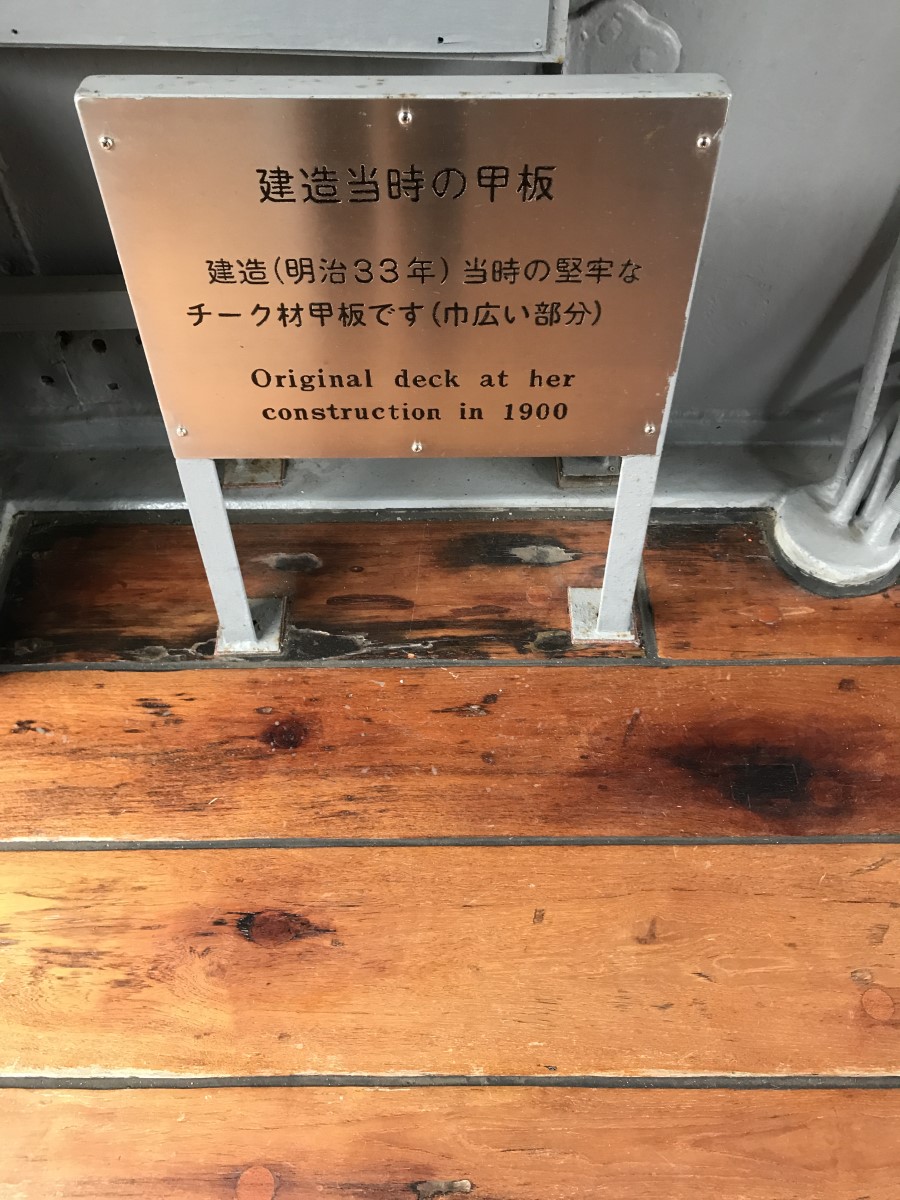
The tour guides were very proud of what remained of their original deck, seen below.
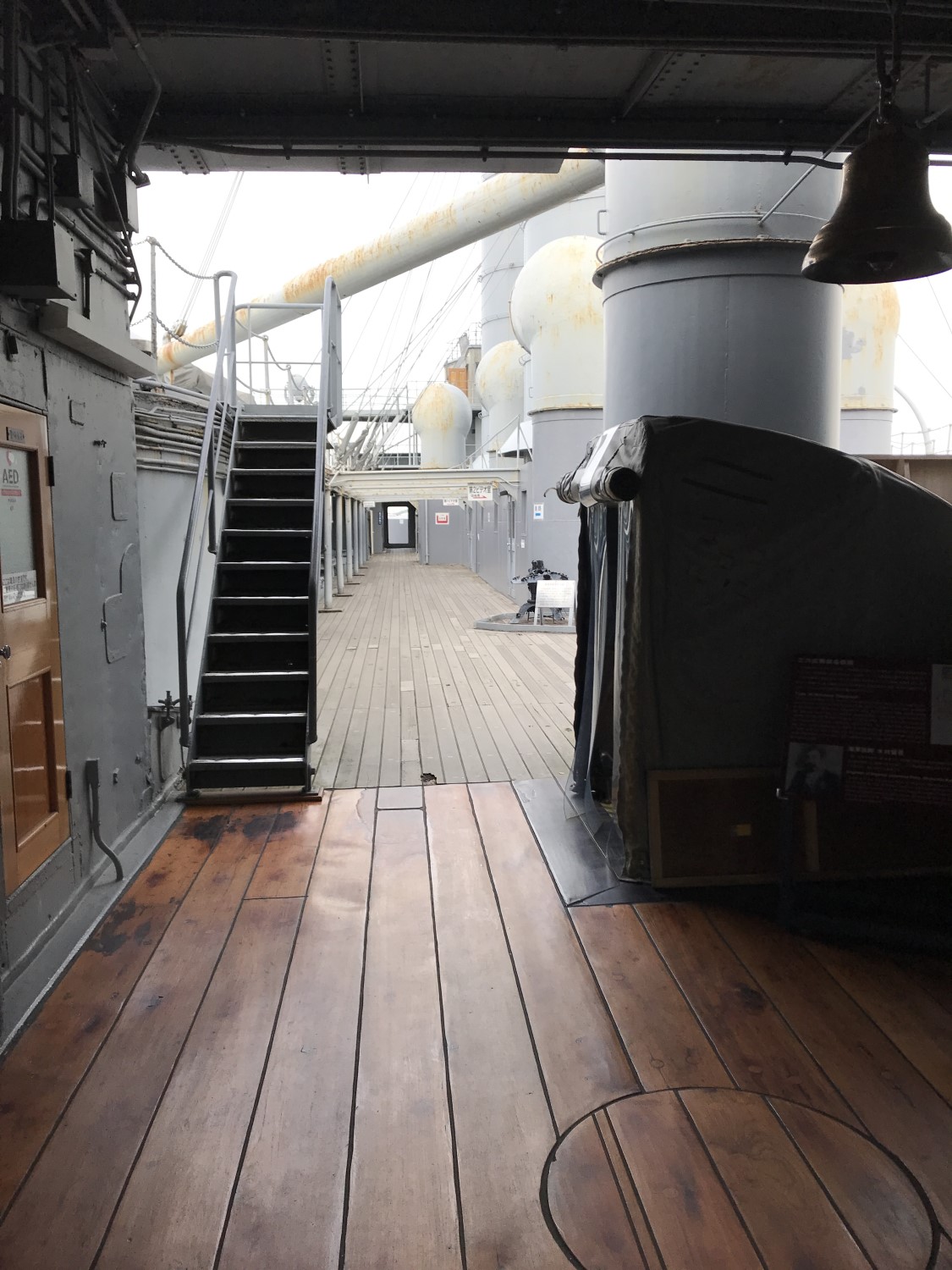
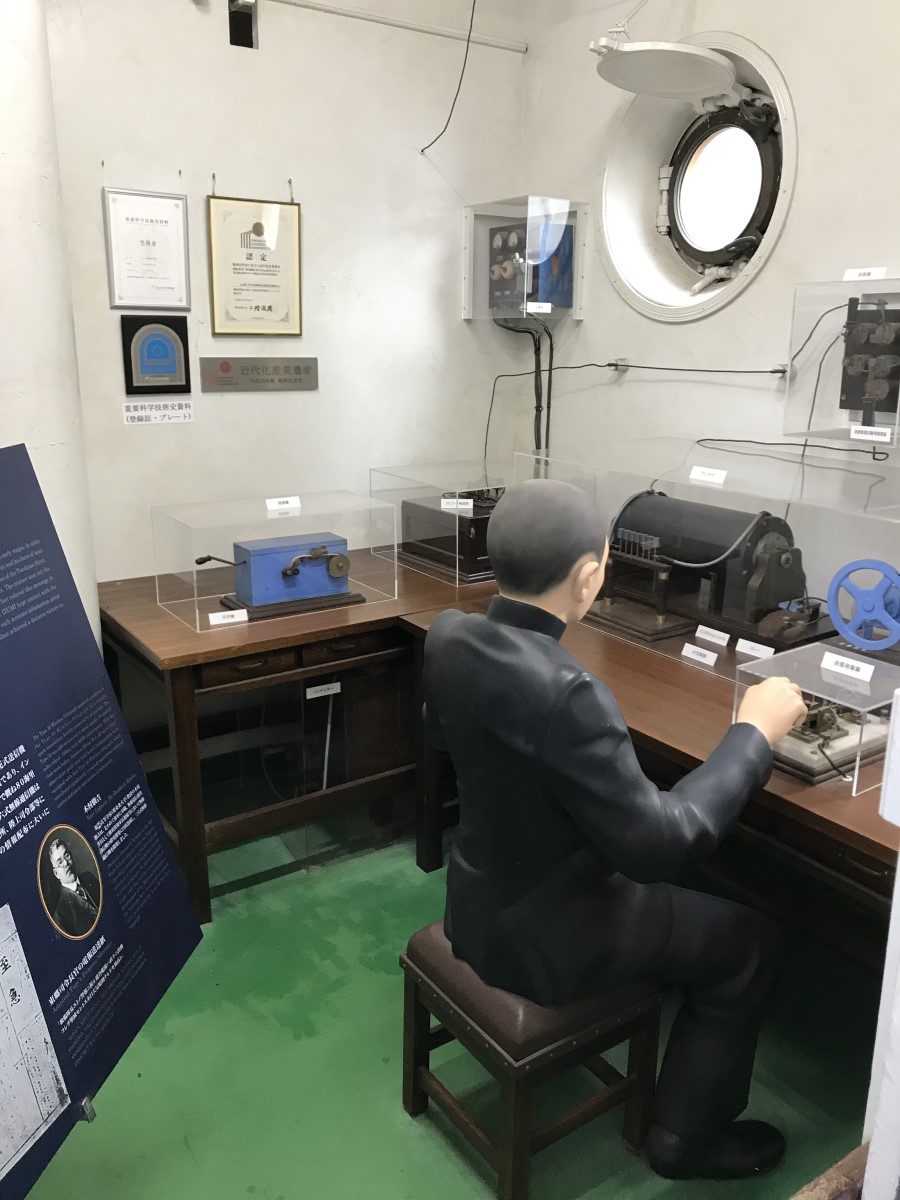
The radio room on Mikasa. The Russo-Japanese War was the first to see major use of radio communication, with the Japanese taking advantage of the technology to get reports from their scouts in the opening hours of Tsushima.

One guide did all of the English signage, and he did a good job overall. This is the one exception, where he said "Frankfort" when I'm pretty sure he meant "casemate". I have no idea how this happened.
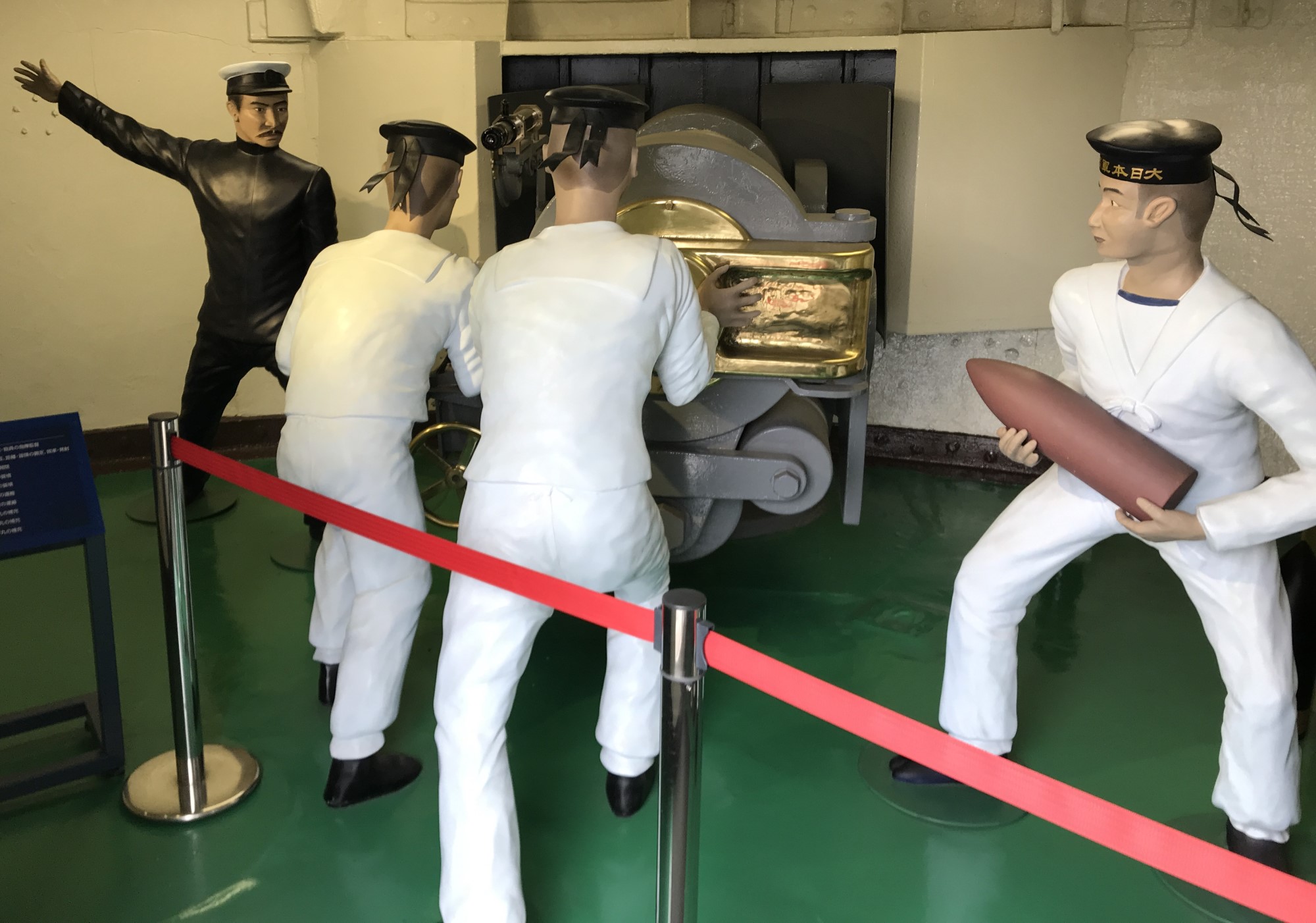
Inside the casemate, a display of the crew of a 6"/40 Elswick QF gun. In reality, there would be several more people getting ammo from the hoists to the gun crew.
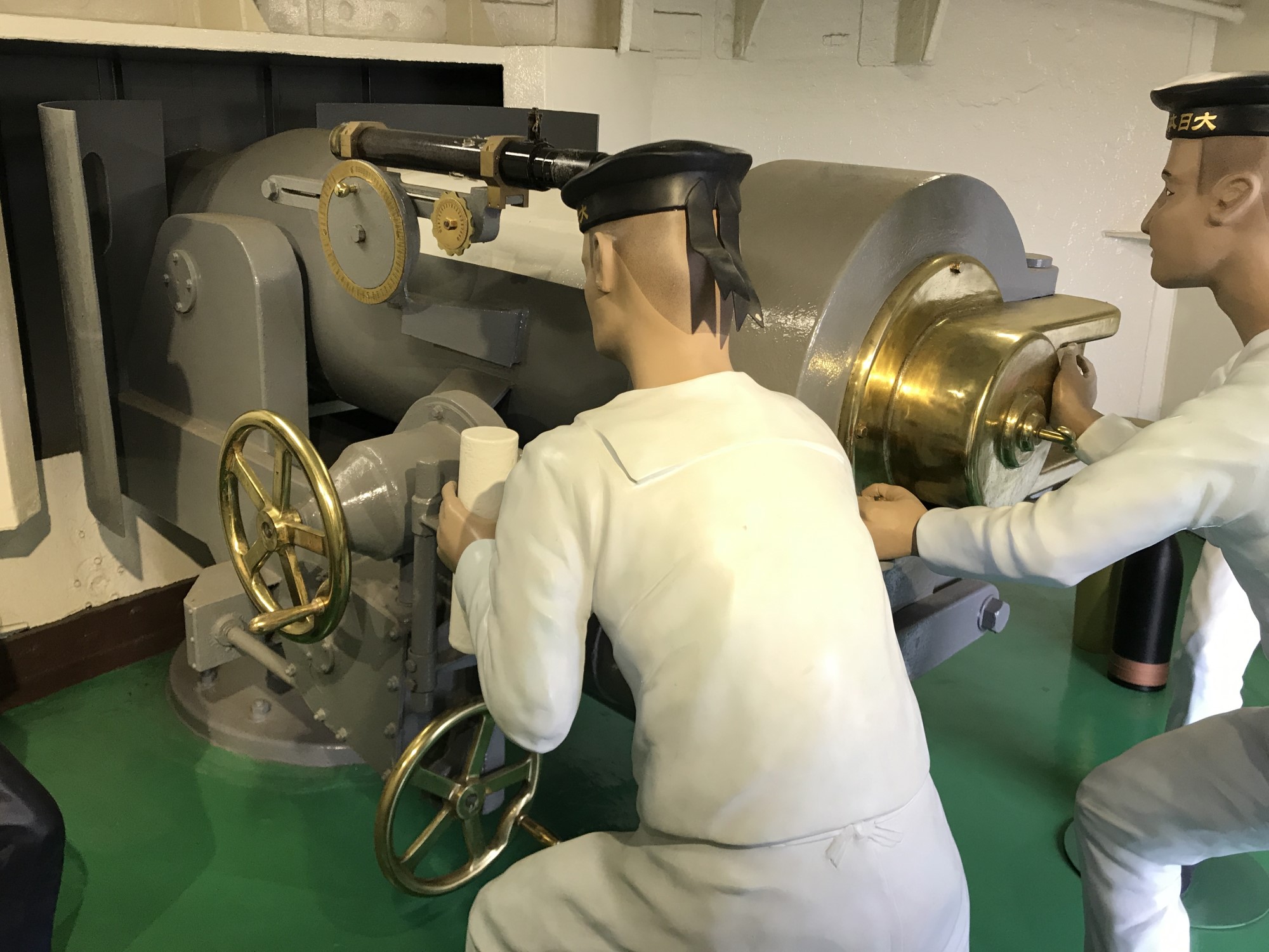
Note the sighting telescope and elevation and train handwheels. This was from the era before secondary battery directors and remote control.
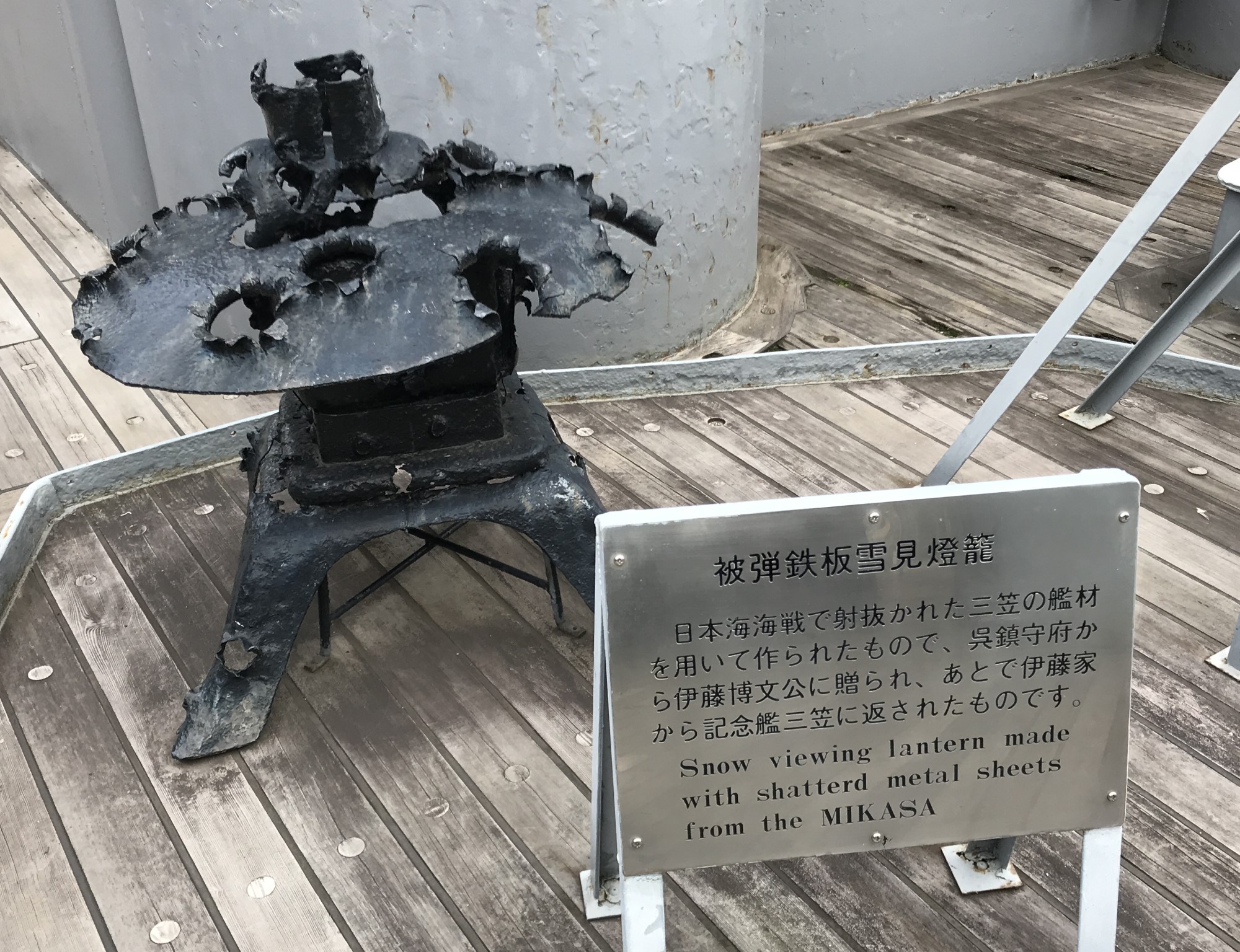
Look! An Art!
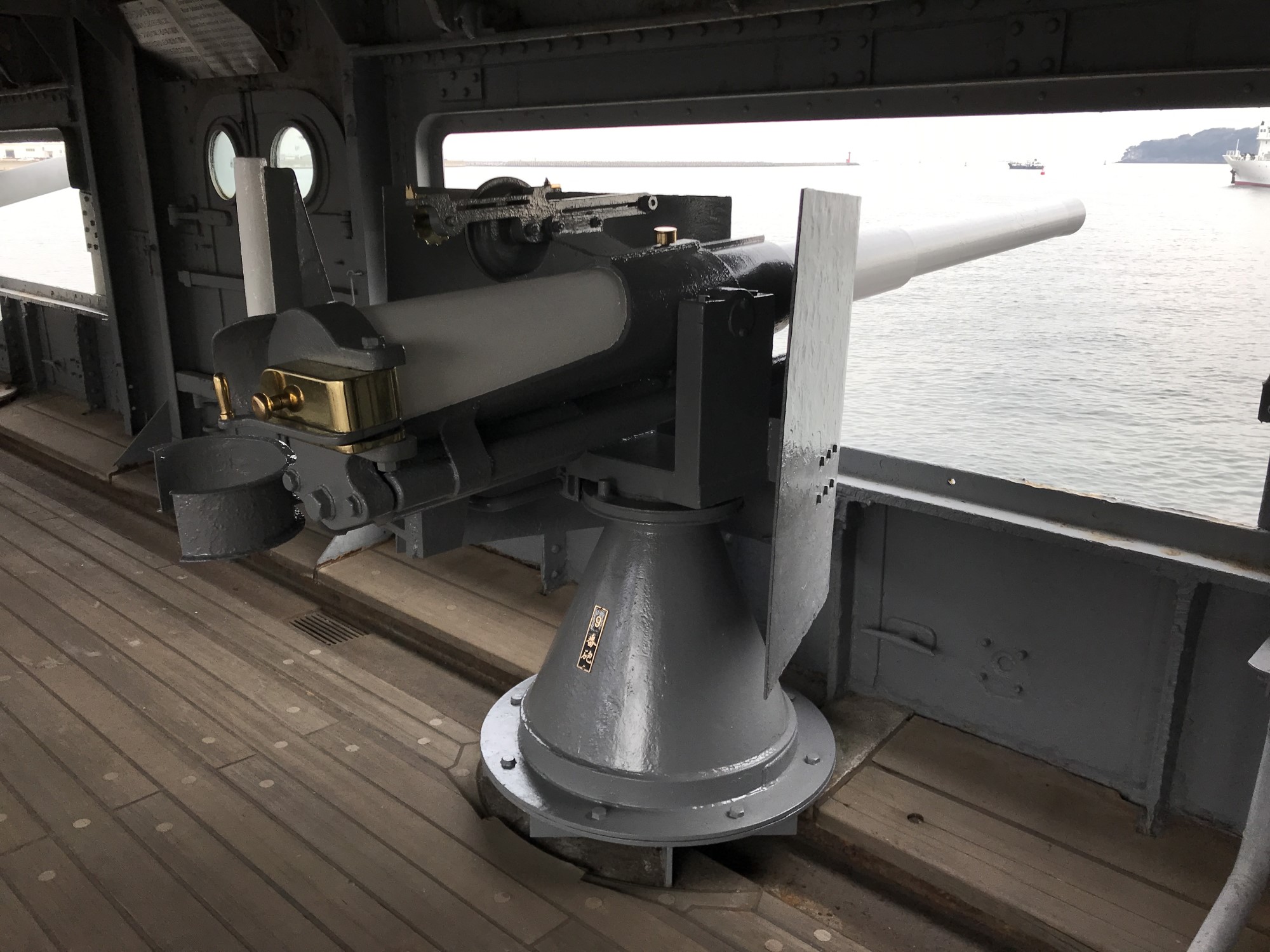
One of the 3"/40 caliber anti-torpedo boat guns fitted above the 6" battery amidships.
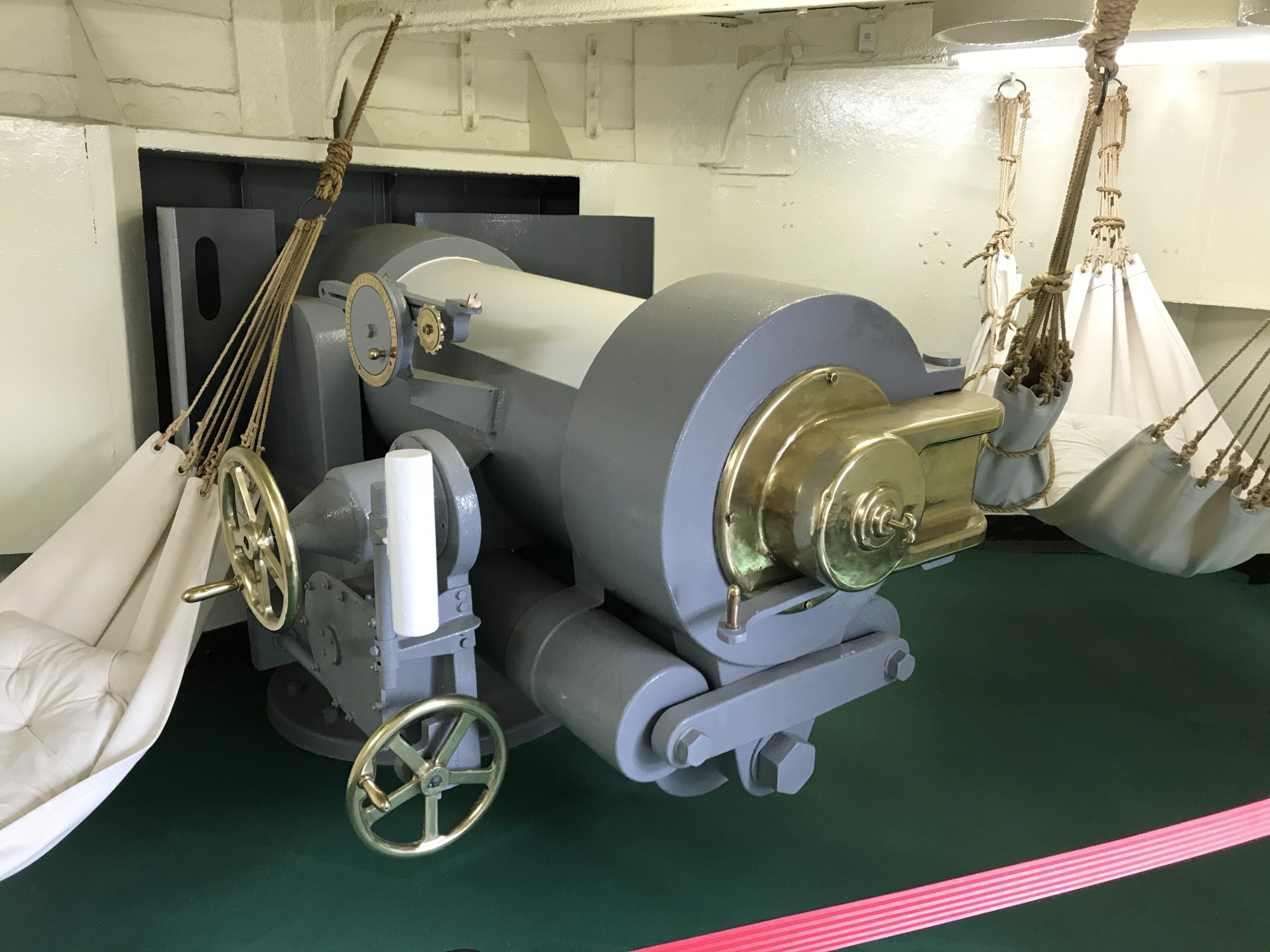
Hammocks hung around a 6" gun. Cramped quarters and fitting living quarters into any available space were common at the time.
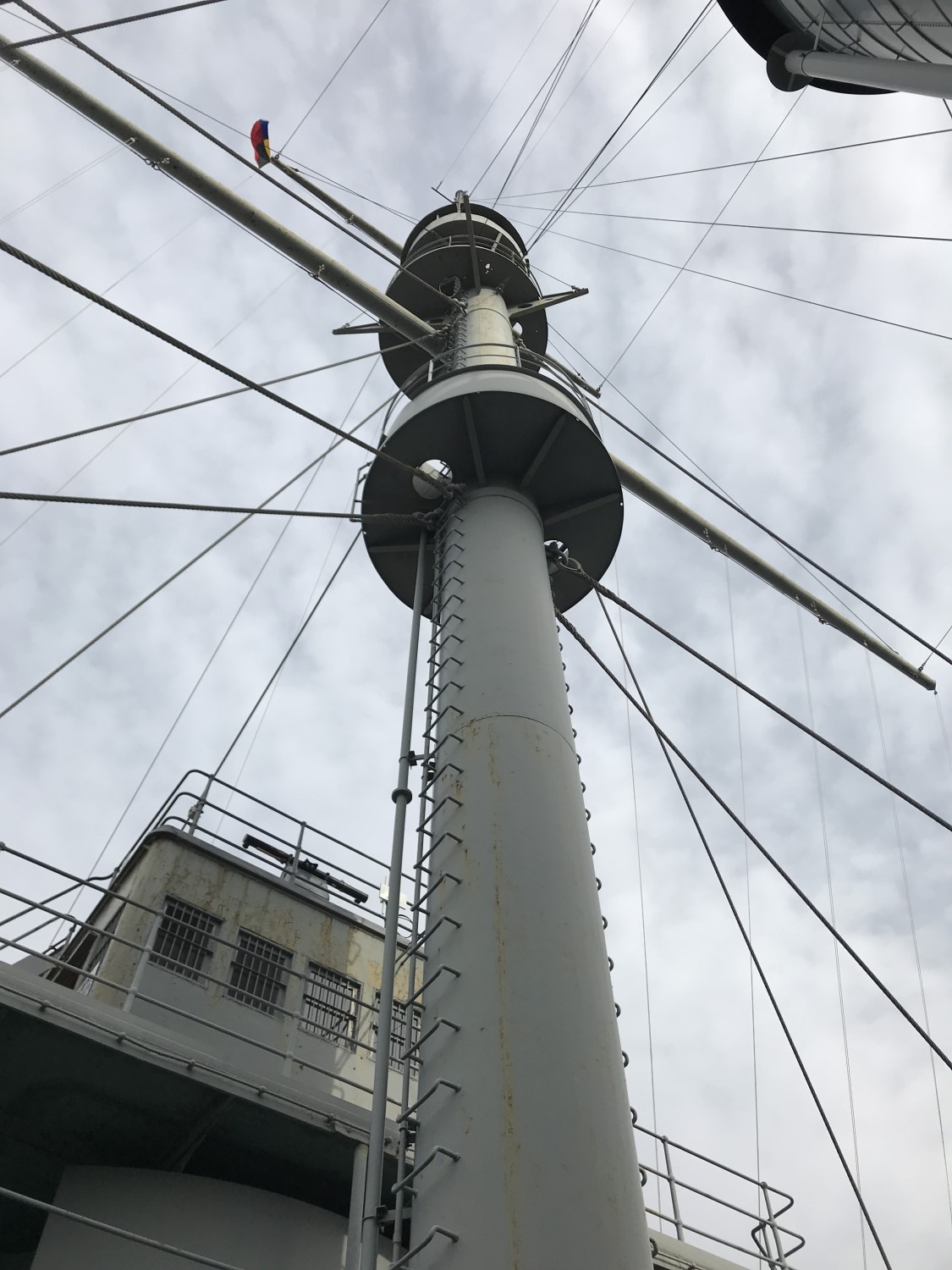
I'm very proud of this cool-looking photo.
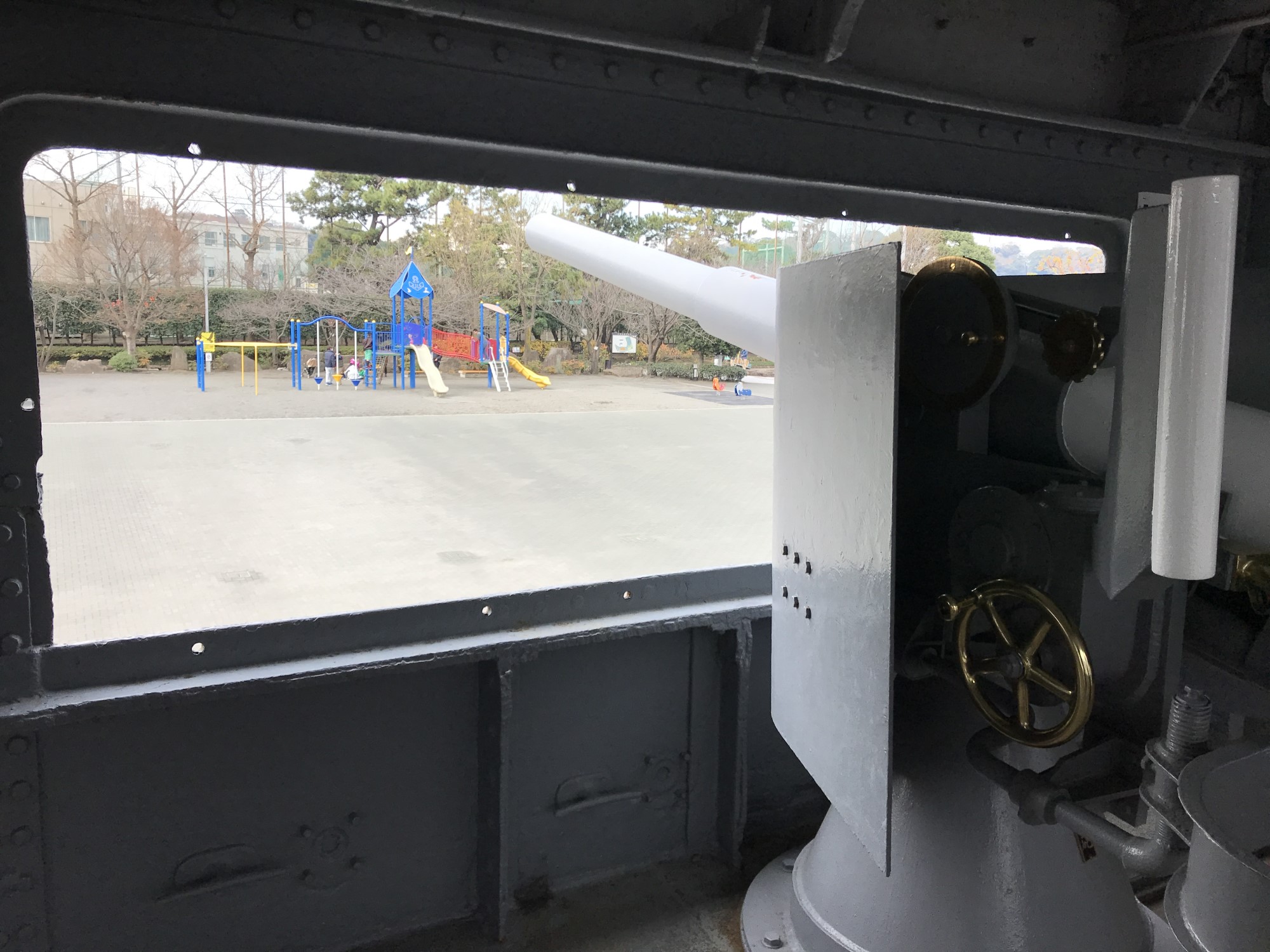
One of the guns helpfully overlooks a playground, so you can take out any children who are being particularly annoying.
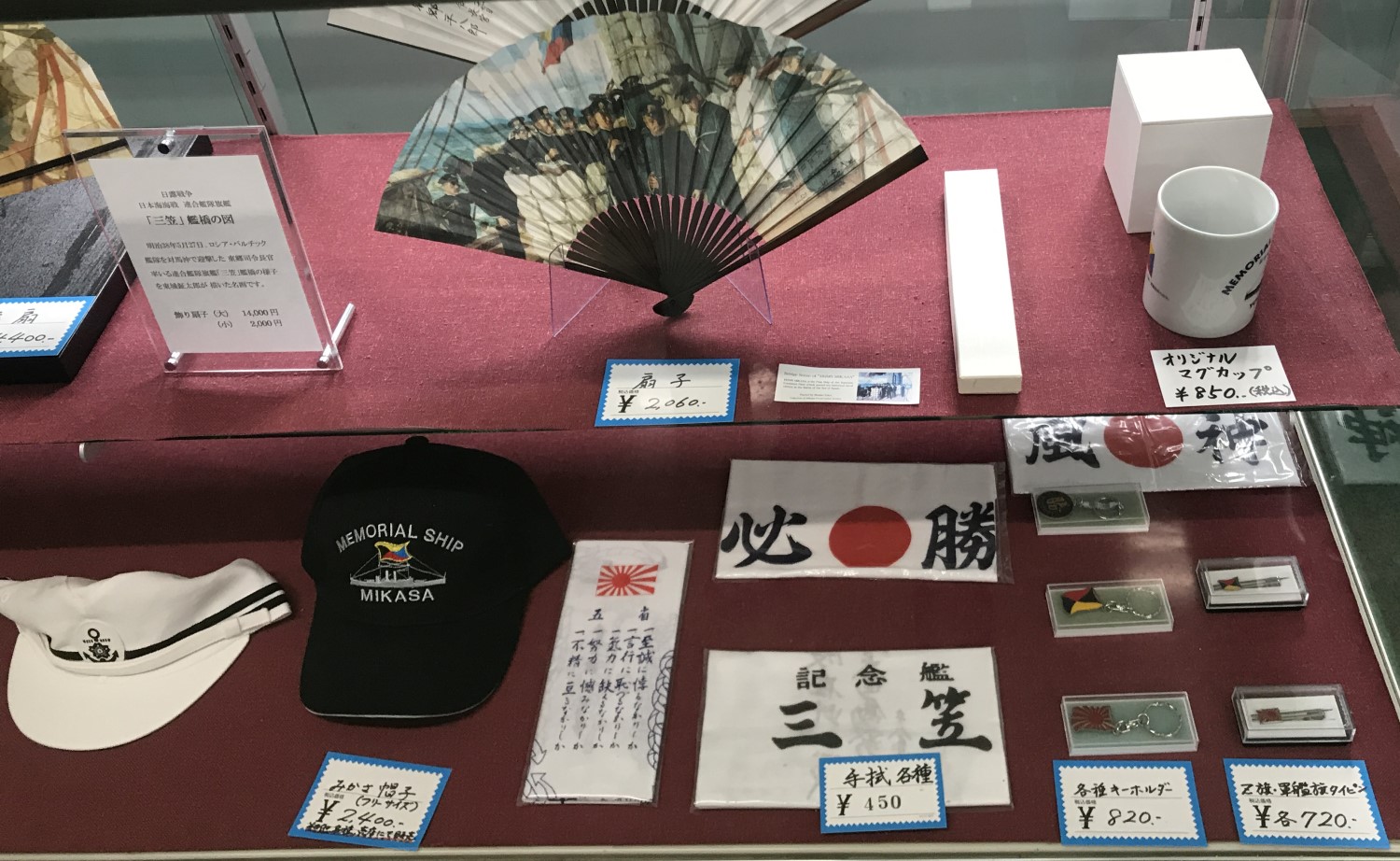
A small sampling of the gift shop selection. There was a fancier version of the fan that could be yours for the low, low price of 14,400 yen (~$140), because Japan.
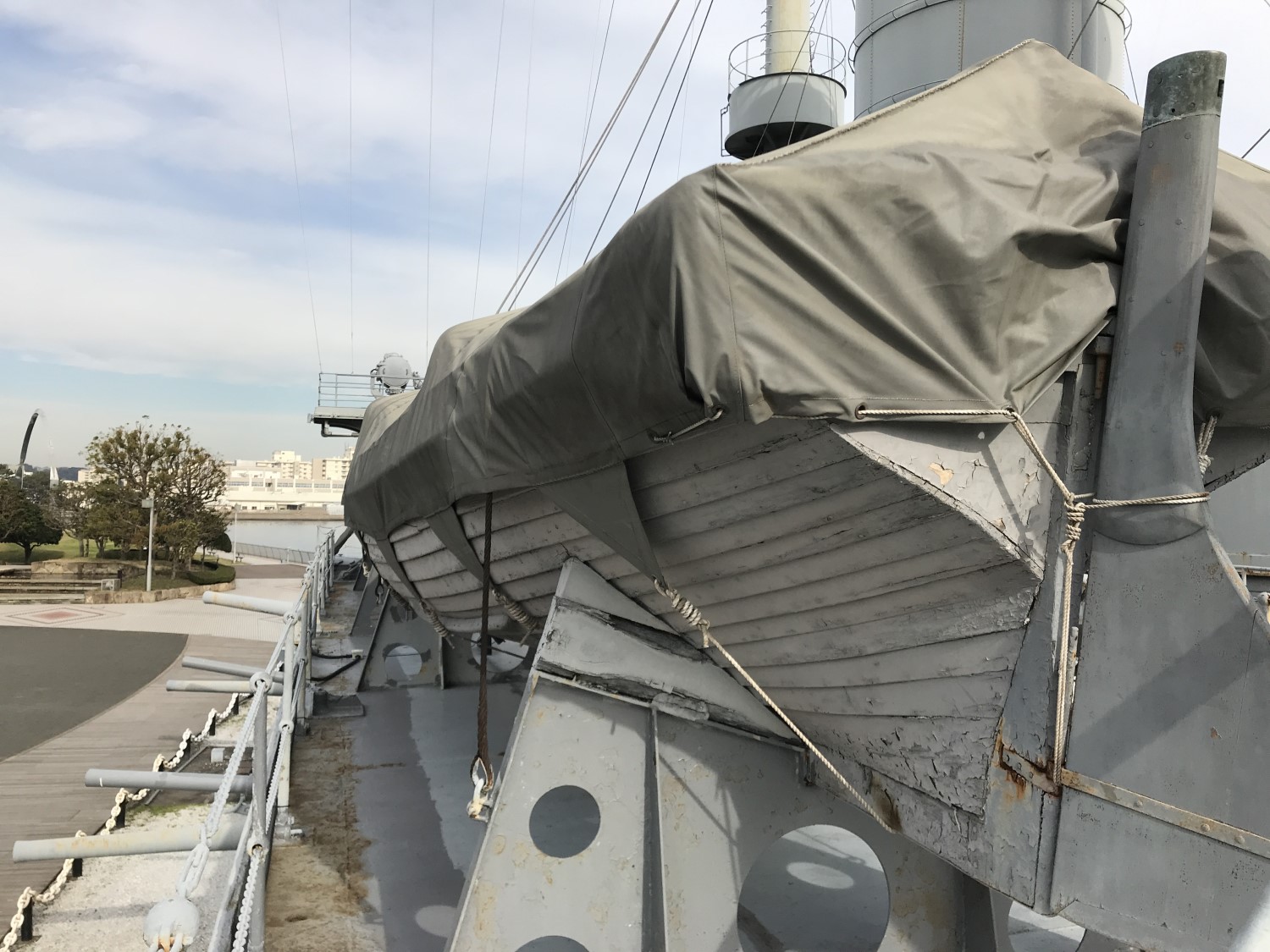
One of the ship's boats. Note that it's clinker-built.
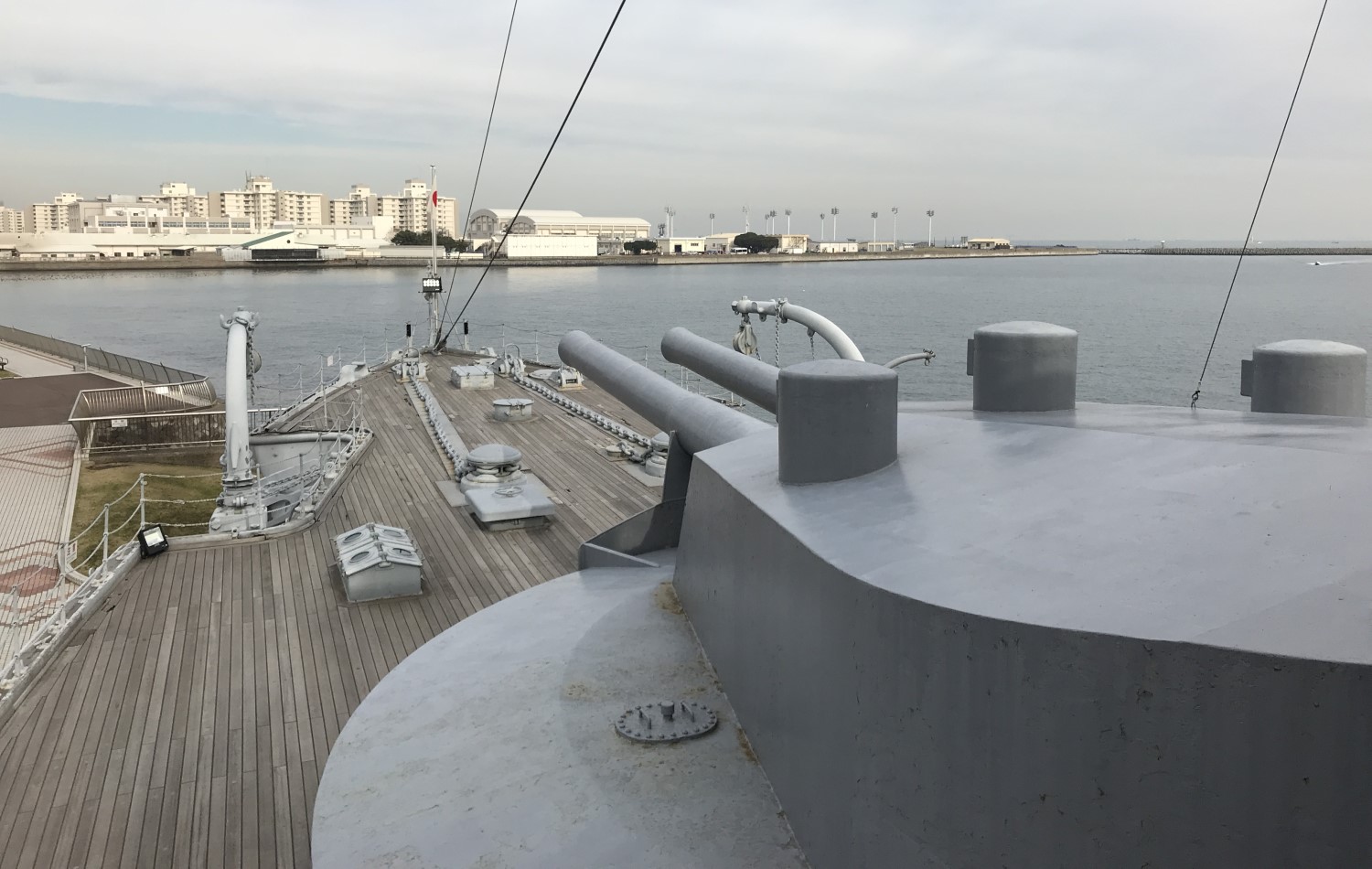
A view over Mikasa's forward turret. Note the three sighting hoods (one for each gun's elevation and one for the turret's train) and the fact that the barbette covers much more area than the gunhouse. This was characteristic of British designs at the time.
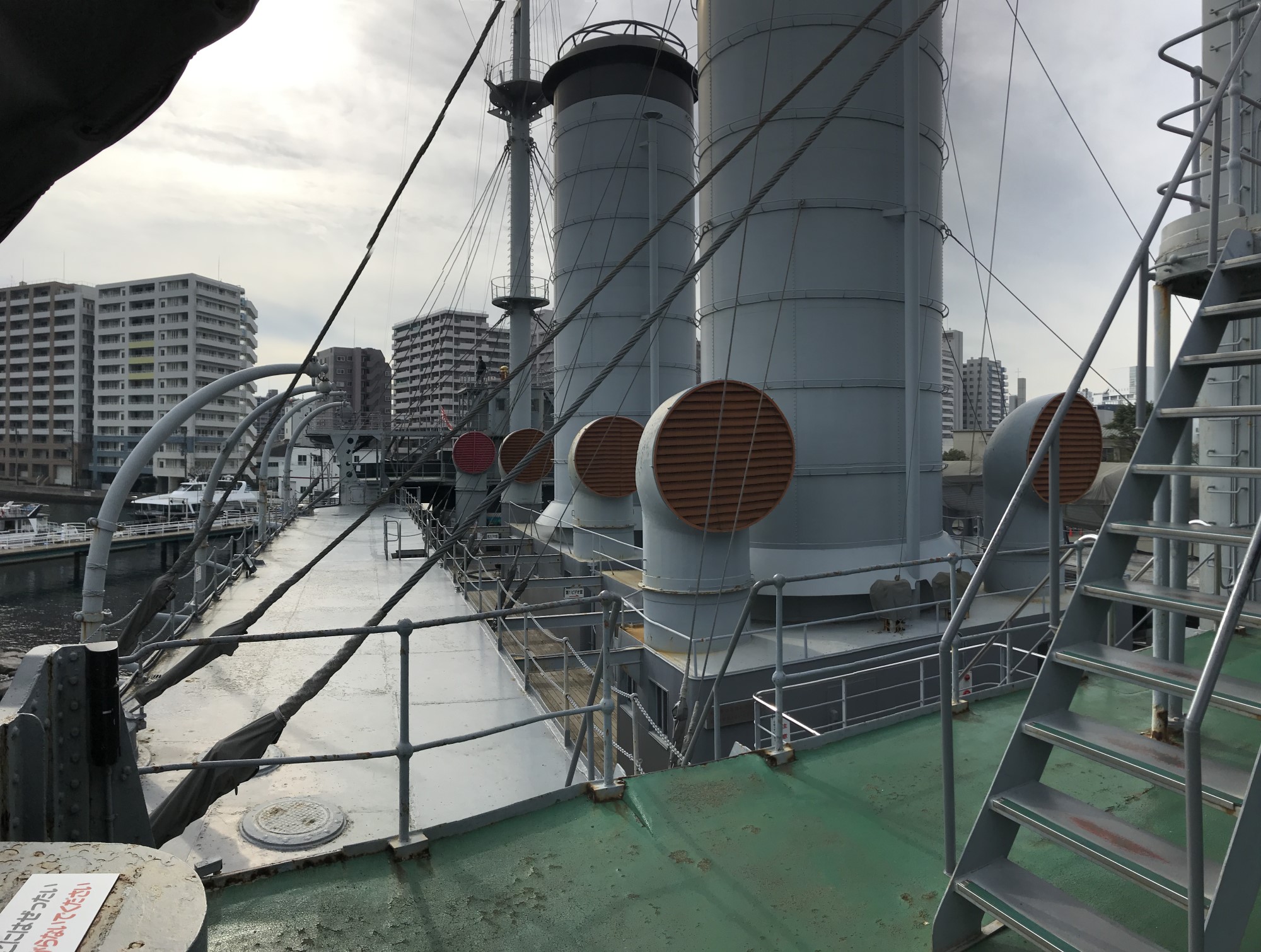
A view aft along the center of the ship. You can clearly see the air intakes for the boilers, as well as the davits for the ship's boats.
We're certainly not done, but I don't want to put too many pictures into one post. We'll pick this up again later.
1 All pictures courtesy of Lord Nelson. ⇑

Comments
Glad you also enjoyed your visit! The signage is indeed a strong point - it's been a while now, but my recollection is that the signage was best at the military museums (Mikasa, Yushukan, Yamato & JMSDF museums) and worst at the art museums (I remember the national museum flopping with me for that reason). I suppose the explanation is probably in the desired target audience: the Yushukan crew in particular wants foreigners to hear their message (except for one particular display there).
The history seeming a bit surreal struck me as well. Whoever wrote the Mikasa signs clearly thinks of that as "the good war." I remember being particularly surprised by one sign which claimed that seeing Japan defeat Russia caused the US to reduce racism against African Americans. I'm no Japan expert and no anthropologist, but in my experience with people, I think the two most common ways to react to horrible elements of national history in general are to either (1) deny, deflect, and search for salvageable parts, or (2) self-flagellation. Japan clearly has a lot of both going on, being known for both revisionism and pacifism. Mikasa is definitely in "salvage" mode. As John Schilling (?) pointed out to me at the time, the revisionists want to maintain museums more than the pacifists. That's surely doubly true for a memorial warship.
Do you think your guide's perspective on history is, for lack of a better word, dangerous? As in, would the government he wants be a negative for world peace? Or a negative for the US? I think from my (American) perspective, it is hard to find a balance between wanting to discourage a pretty revolting and historically inaccurate revisionism, and also wanting the Japanese public to embrace military spending of 2-3% of GDP and a willingness to fight in alliance if necessary. How do you get a country to accept "last time we used our military, we were tied for evilest ever" and simultaneously "we should get a big military again."
@DismalPseudoscience I really enjoyed the National Museum. Lack of signage is a much bigger deal breaker for me in military museums, since I know less about military history than art history. Not to mention I'm mostly interested in the art itself when I go to art museums, and rarely look at the signage, except to note the artist's name for any pieces I love.
I must have missed the "reducing racism" sign. That's both baffling and incredibly amusing.
From what I've heard about Japanese nationalism and how Japan teaches history in its schools, the guide's comments were fairly typical. I don't know if I'd go so far as to call them "dangerous", at least not in the sense of being a danger to the US. He didn't seem to have any ill-will towards the US, just an overly patriotic view of Japan's military history. His comments seem very strange from a foreigner's perspective, but that's to be expected; no country wants to paint themselves as the aggressor in a war, particularly not on signage from a museum ship that fought in said war. (You could make a good argument that Japan's level of historical revisionism, especially relating to WWII, is dangerous from a moral standpoint, but that's a separate issue from it actively hurting current Japan/US relations.)
They are right to be proud of that deck.